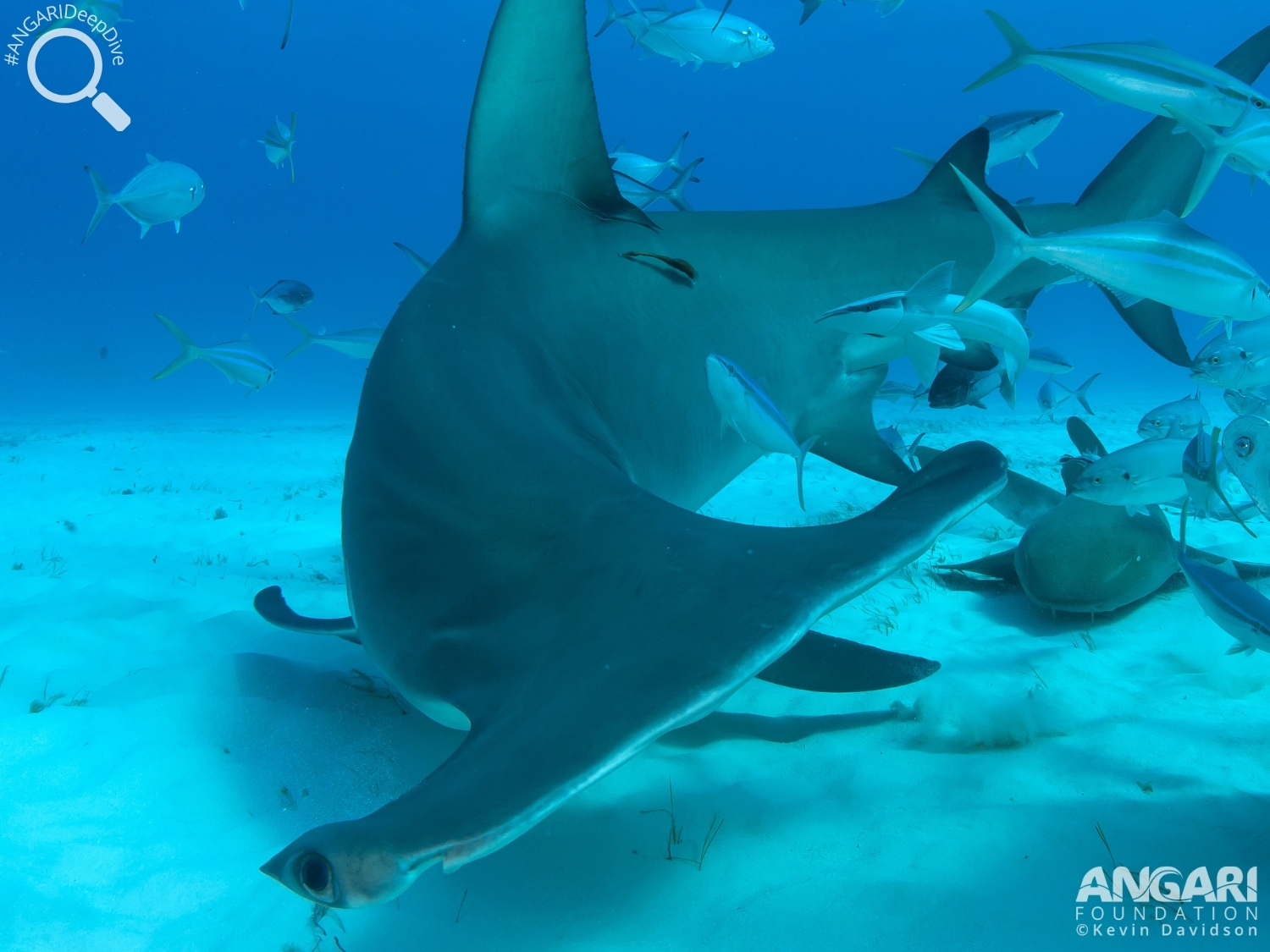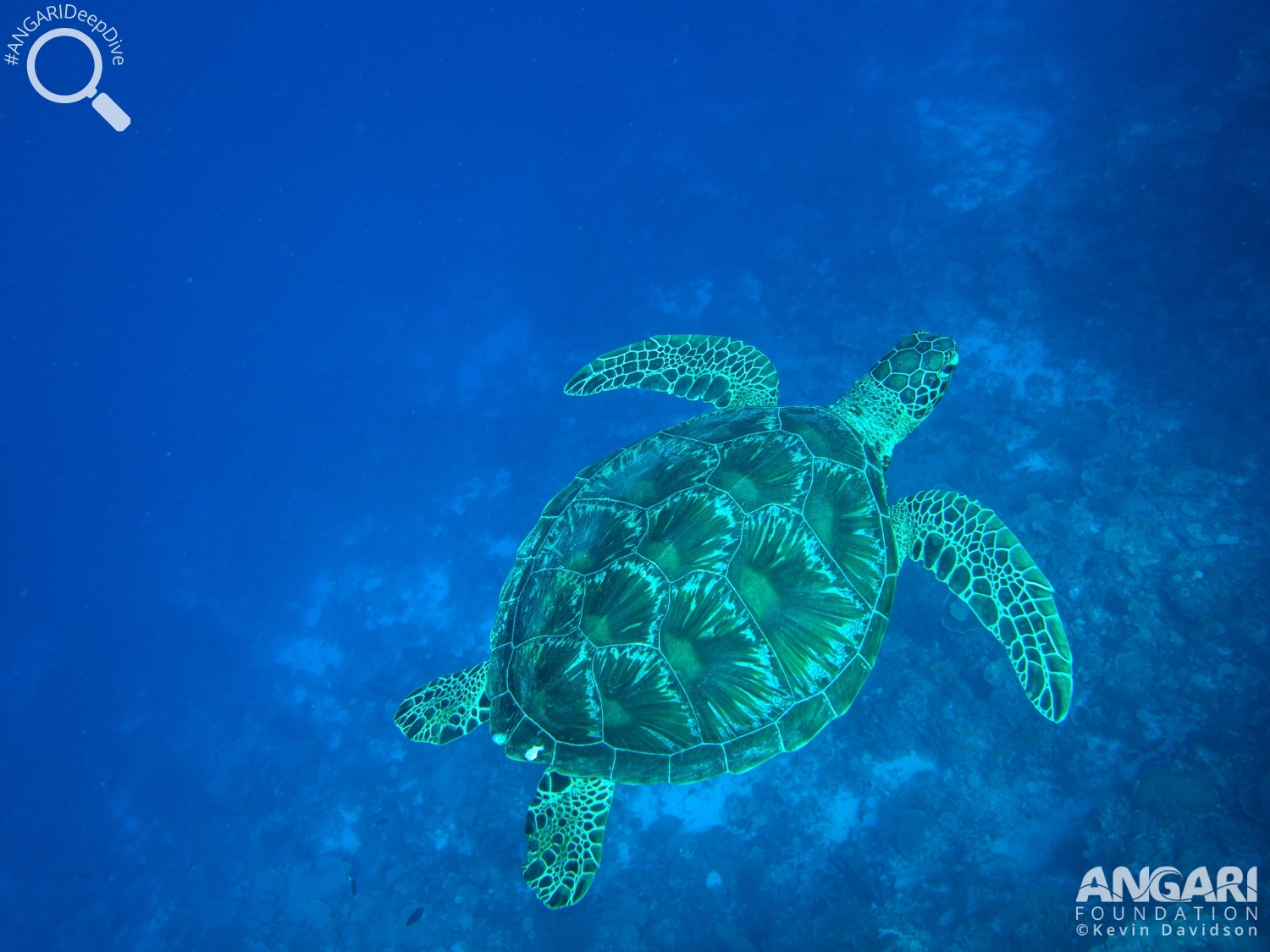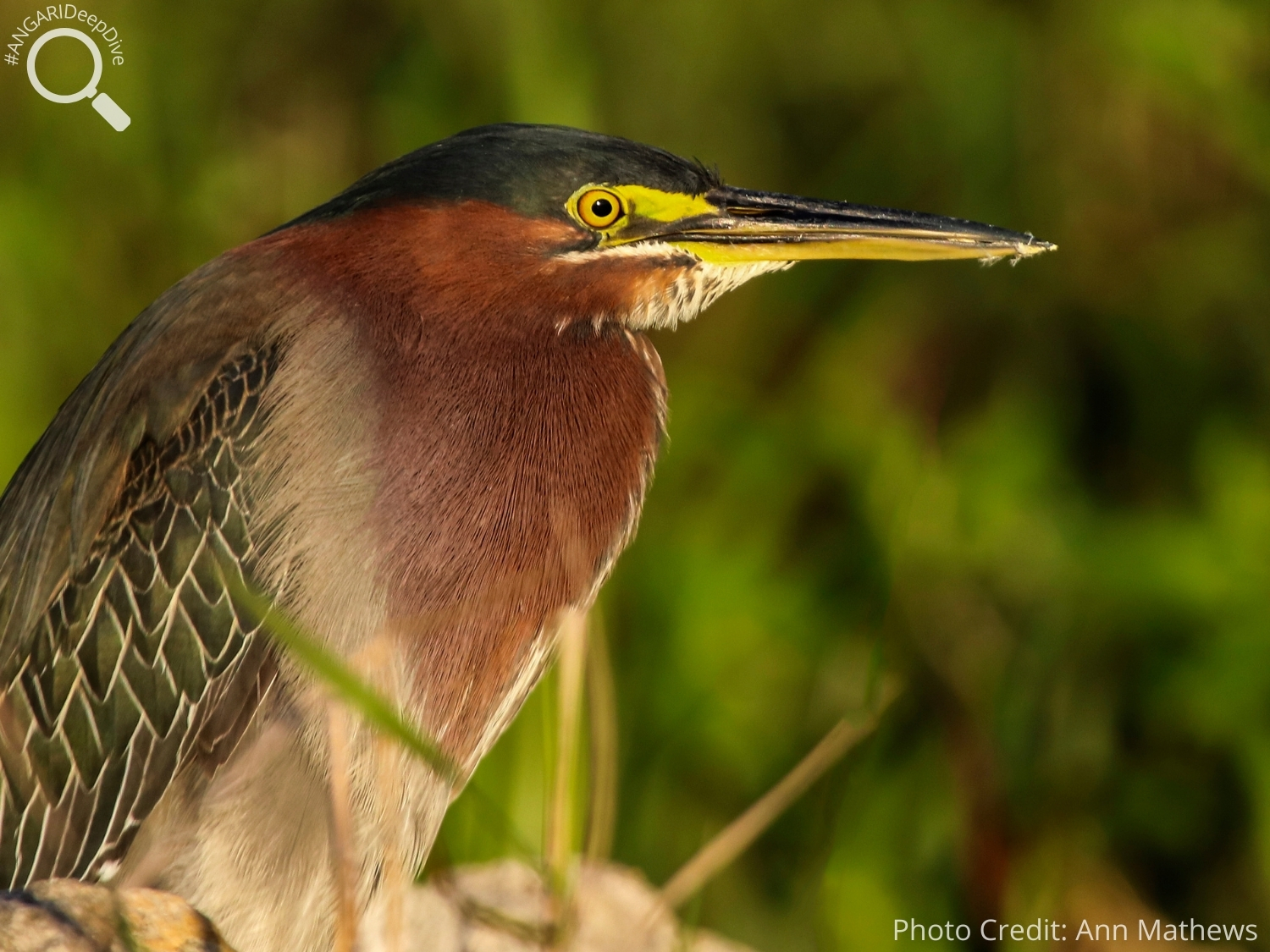The great hammerhead shark (Sphyrna mokarran) is an apex predator within the shark community and…

Goliath Grouper (Epinephelus itajara)
The goliath grouper (Epinephelus itajara) is the largest species of grouper found in the ocean and has a name that fits its size perfectly. Besides their large size, they are easy to identify by their brown and yellow coloring with dark spots across their heads.
#1: Where does the goliath grouper live?
You can find goliath groupers in the waters off Florida down to Brazil in the western Atlantic and from Senegal down to the Congo in the eastern Atlantic. They are primarily found in shallow tropical waters among coral reefs, and juveniles can often be found seeking protection around mangroves.
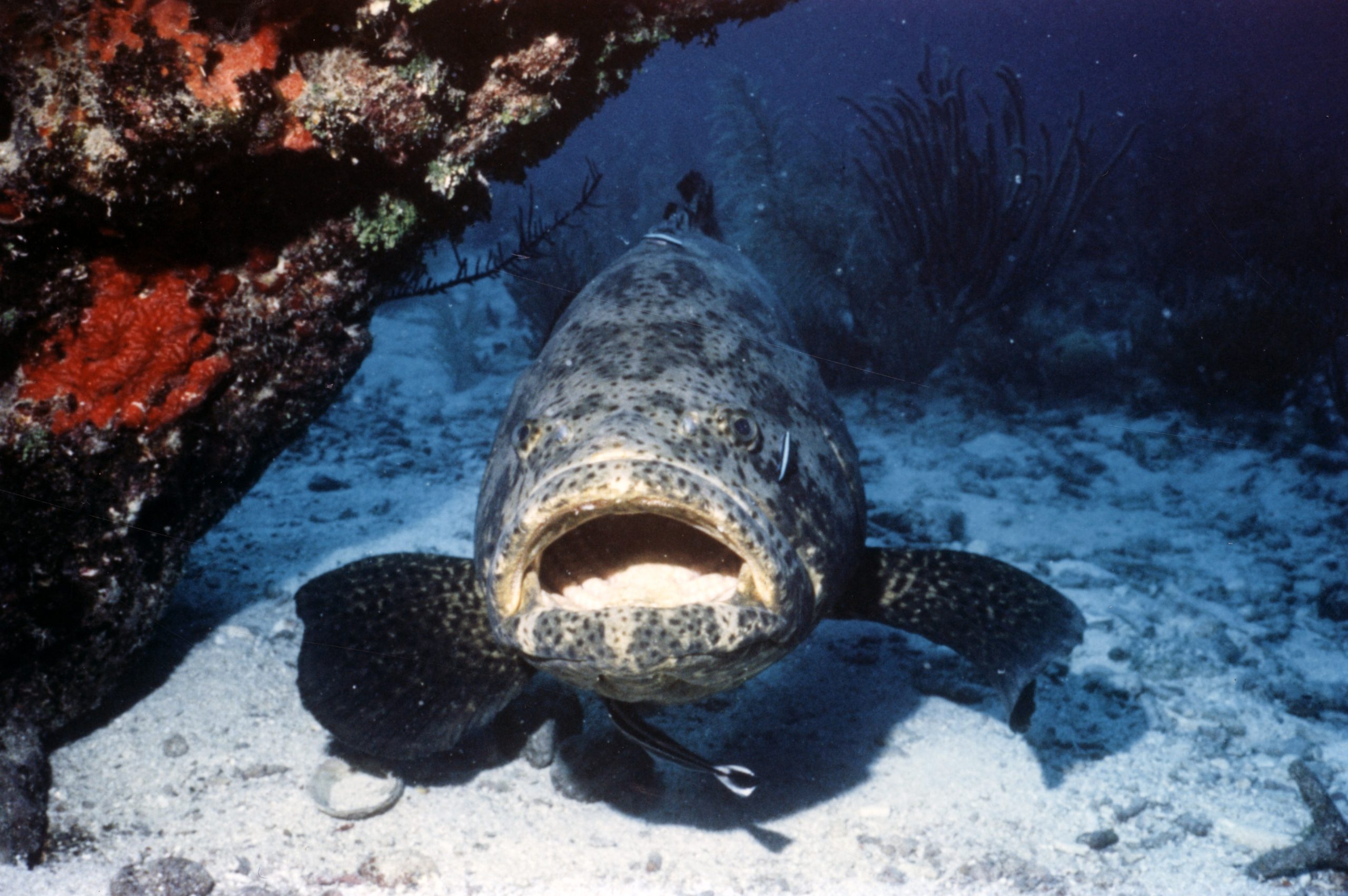
#2: How big is goliath?
The goliath grouper can get really big. They are known to grow to some incredible sizes – up to 8 feet long and weigh up to 800 pounds!
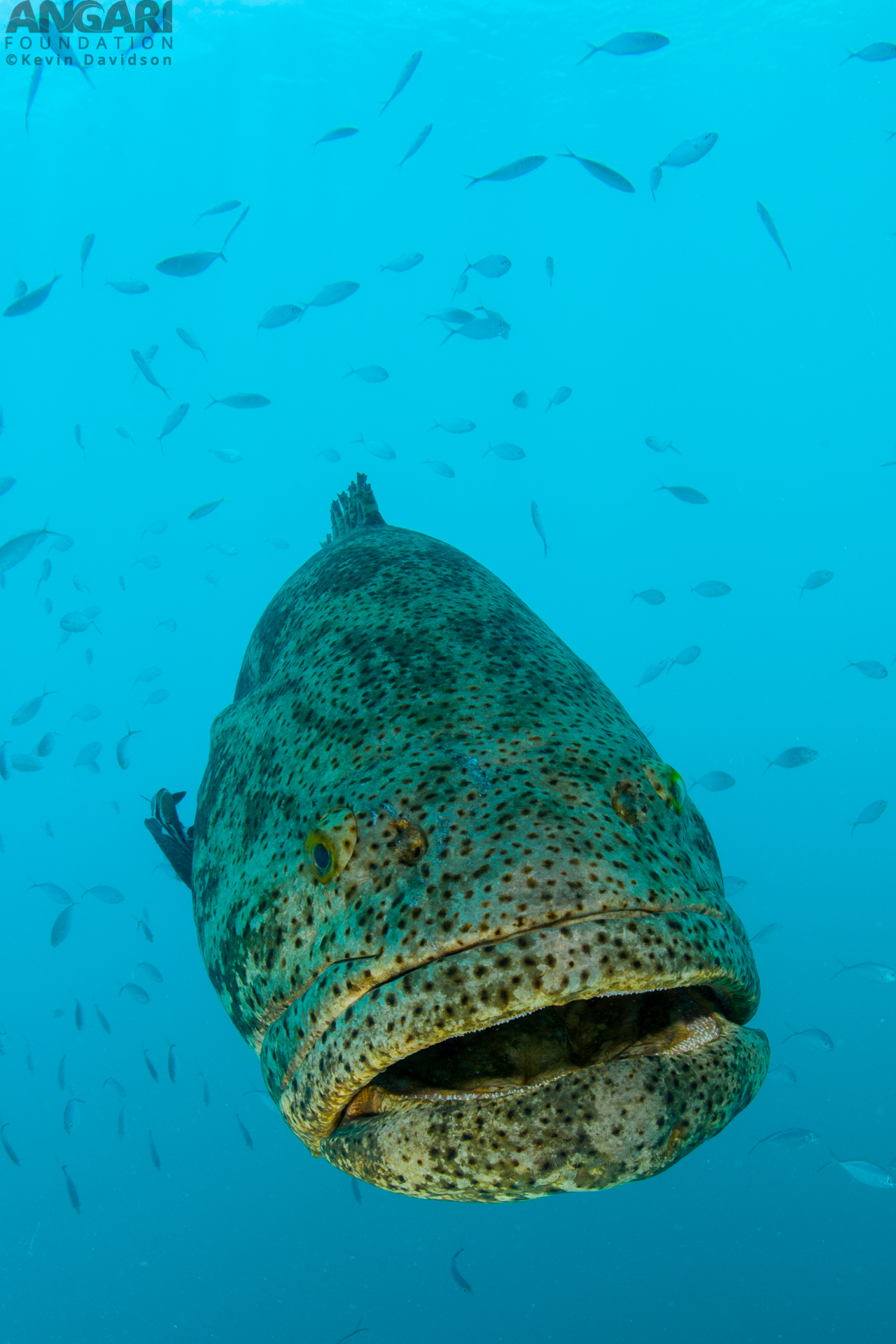
#3: Goliath grouper coloring serves a purpose.
The goliath grouper has distinct coloring. The yellow and brown coloring is mottled together, which helps it blend into its rocky coral and muddy habitat.

#4: The goliath grouper will let you know if you’re in its territory!
Goliath grouper are a very territorial species. One way it defends its home and warns off intruders is through a rumbling noise. This rumbling noise is generated by contracting its swim bladder and surrounding muscles.
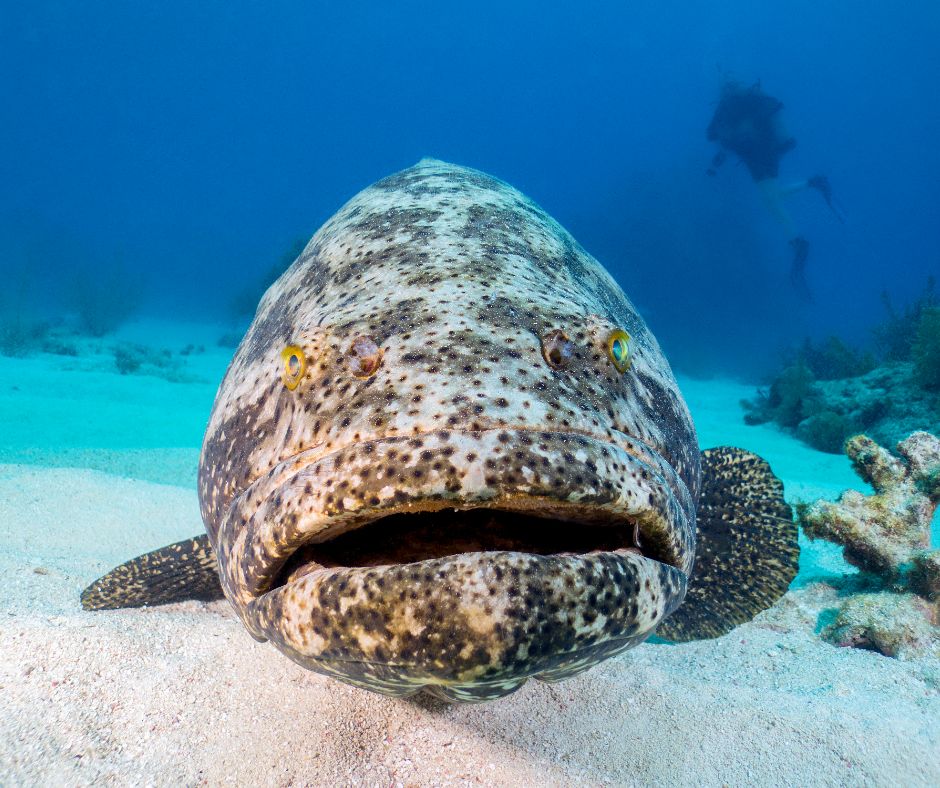
#5: What wants to eat a goliath grouper?
With goliath groupers being extremely large, you might think that they don’t have many predators. However, species that prey on the goliath grouper include great hammerhead sharks, sandbar sharks and large fish like barracuda.
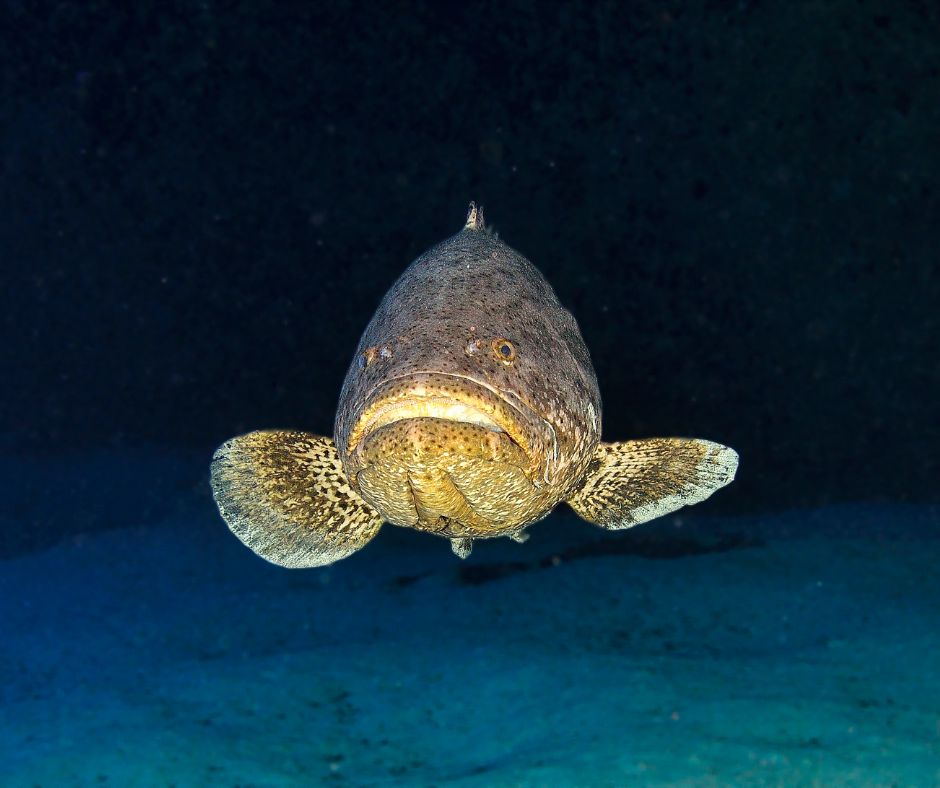
#6: How does a goliath grouper catch its prey?
Goliath groupers are ambush hunters. They prey on lobsters, crabs, stingrays, octopus and even young sea turtles. When they open their large mouth, they engulf their food in a vacuum of water.
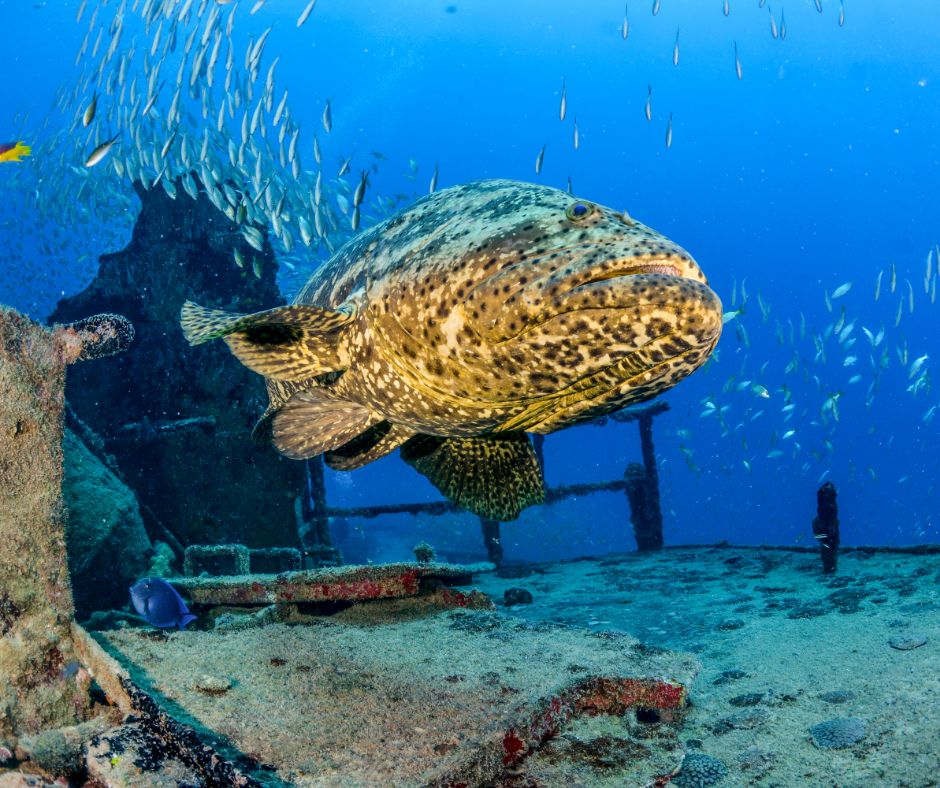
#7: Goliath grouper reproduce in mass spawning events.
Goliath groupers reproduce during mass spawning events. These events takes place at specific times during the year and at specific locations. Hundreds of goliath grouper gather and participate in mass broadcast spawning.

#8: Can goliath grouper populations indicate a balanced ecosystem?
Goliath groupers are an important species for keeping the ecosystem balanced, making these large fish a keystone species. This means that many other species within their habitat and ecosystem rely on them to survive.
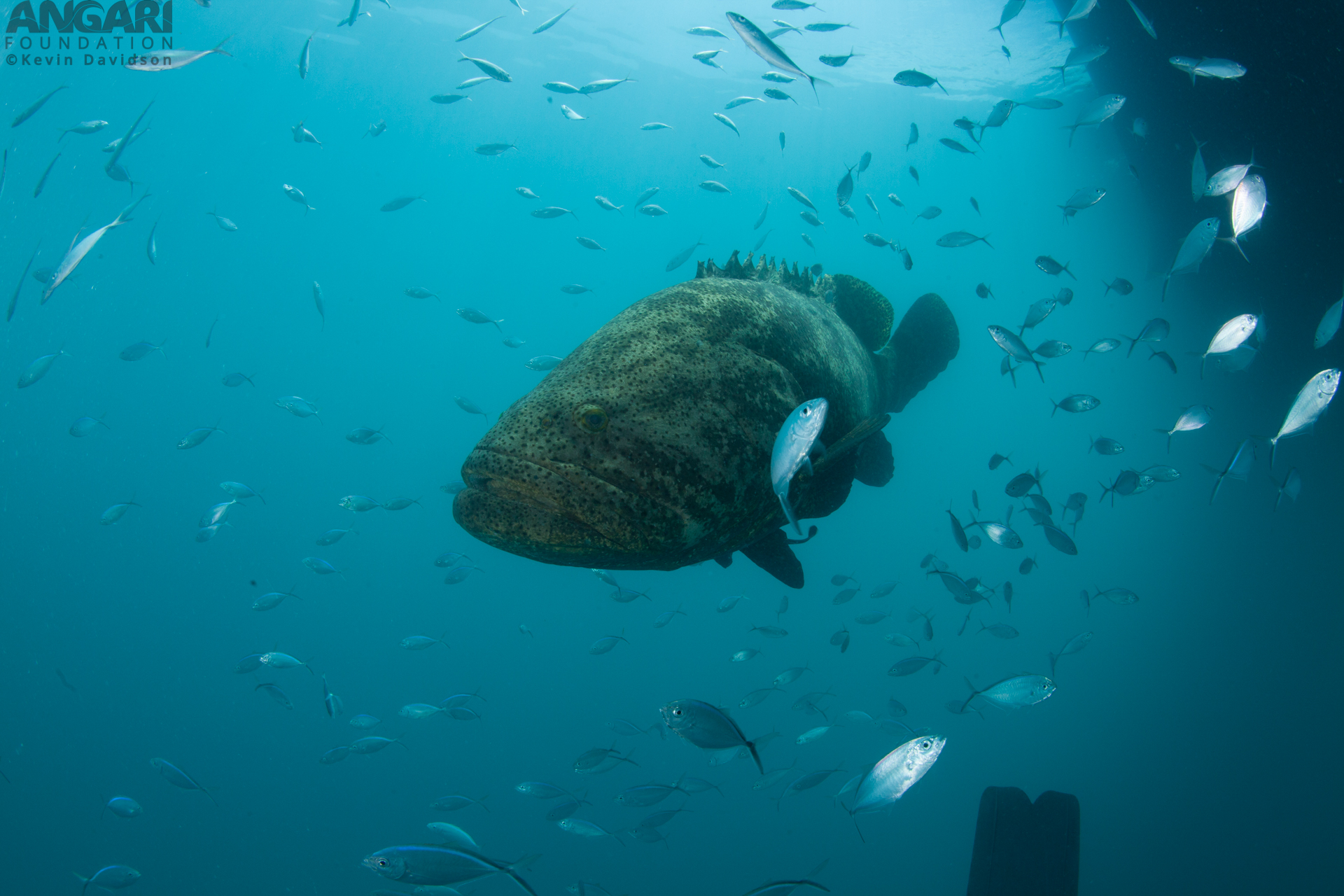
Goliath groupers are slow growing and take time to reach maturity. These factors contribute to the slower growth of their population. Since 1990, harvesting goliath groupers in U.S. waters has been prohibited, and the IUCN describes them as a critically endangered species. It is thought that there has been a large reduction in this species’ population due to exploitation of their annual mass spawning events. We can all help this species by sharing the importance of goliath groupers to the marine environment and following government fishing regulations.
Additional Goliath Grouper Resources:
1. Atlantic Goliath Grouper – Oceana
2. Goliath grouper 3D model
3. Boom! Detecting Gregarious Goliath Groupers Using Their Sounds – Florida Atlantic University
4. Ocean Expert Exchange with Dr. Robert Ellis and the Fish and Wildlife Research Institute, Florida Fish and Wildlife Conservation Commission

